Well, here we are. The end of the experiment. Was I able to be creative every single day for an entire year?
Short answer: of course not, if by creative we mean “producing something new.” Many was the day I had no time, nor the energy, nor the ideas even to commit failure to paper. I knew that going in, needless to say.
At one point in the year I know I expressed envy of those on the web who were doing similar kinds of projects, producing a drawing or watercolor or small oil or photograph every day. I don’t know that I would have overcome my reasons for not producing every day if I had been producing a concrete thing rather than music (my focus for the most part), but it seemed to me at the time that they had an advantage over me. (So why didn’t I just whip out a watercolor those days?)
Would I able to claim that I was creative every day if we don’t mean “producing something new”? Perhaps. As I read Out of Our Minds and skimmed back through some other books like Fearless Creating and Twyla Tharp’s Creative Habit, I was reminded of what I already knew going in, that creativity is not production. It is a process that must include plenty of incubation as well as consumption of material. However, I think I claimed those days.
Mostly what I have found is that I do best when I’m a) on a schedule; and b) on a deadline. If I set aside Sunday mornings and then two evenings a week to compose, then I actually do compose, or at least fail at it. And the days in between, I am thinking about the stuff I’m working on.
The schedule also means I have the time to get in the groove. It takes me about twenty minutes to warm up, so to speak, and to get ideas flowing out of my head. At least that’s the case with composing. Writing, I can do on the fly (witness my dog-walking lyrics) if I’ve set myself a framework. I can spew some music while walking, but it’s all guesswork, since I have not yet achieved my goal of being able to transcribe what’s in my head.
Having learned all of this, I think I’m able now to set up the conditions under which I will be most productive. I may be able to, in the future, modify those conditions, but for now, I know what works for me.
So what did I accomplish this year?
First and foremost, of course, was the completion of William Blake’s Inn. A project that has occupied me off and on for twenty-five years, I was on the last leg of the journey when I started this project: finishing Blake Leads a Walk on the Milky Way. It took me over a month to do that.
Next it was orchestrating the entire work. (I think I may have started orchestrating some of the pieces in order to distract from Milky Way.) This project is not quite finished, of course. I have not yet officially orchestrated The Man in the Marmalade Hat Arrives and Blake Tells the Tiger the Tale of the Tailor. They’re quasi-scored using various instrumental sounds in the piano score, but I don’t have actual orchestral scores for them yet. Unless someone in Newnan, GA, steps up to organize the production, my widget says we have 447 days until opening night, those two items will remain on the back burner.
At the same time, I started the “Highway 341” poem. I used that as a fallback item on days when I didn’t/couldn’t compose, but I haven’t worked on it since shortly before finishing Milky Way. I guess at that point the Inn took over. Well, it’s still a pretty good start, and I can return to it in the coming year. I would have to go back and do some deep thinking, of course, because I’ve gotten it to a point where I would actually have to start writing about the feelings that inspired it to begin with. And those were never very clear.
I also began, last August, noodling around on my symphony. Needless to say, I haven’t given that any thought since September either, but that is going to be my major project this fall and winter: Stephen Czarkowski has asked for it for next summer’s orchestra. Not exactly a commission, but hey, a request is as good as, right?
Also accomplished this year: Lacuna’s workshopping of the William Blake pieces. Very nice, lots of fun, and very very creative. I like working this way. I don’t like working without a permanent home: my van looked like one of those crazy people with all their prized possessions stacked inside. For months. But the give and take of the workshop sessions was invigorating. If the world premiere gets a green light, then I truly look forward to developing the entire scenario in this way.
I learned how to use CSS (Cascading Style Sheets) on websites, and that has been a very good thing.
I adumbrated and fleshed out the 100 Book Club at school. By the end of the year, we were up and running, but not at full speed. I’m looking forward to figuring out how to ramp that up this year. If it works, I will truly have something amazing to share with the educational community: a reading program that challenges our best readers to read thoughtfully and deeply and then to write about their experience.
I wrote The Invocation, which still stands up as valid. In a similar vein, we established the phase successive approximation as our mantra.
I began work on songs for A Day in the Moonlight, sketching out three so far. Once I get school started and am able to establish a schedule for myself, I could finish that by Christmas. Warning: I’m not orchestrating this baby. I’m just providing vocal/piano scores.
I rediscovered my Stars on Snow album of new age music and began to play with some of those files in Logic Express, Apple’s sound sequencer, which I began to learn how to use this summer.
I got inspired and wrote “Dance for double bass duo and marimba” which not only was greeted warmly by everyone concerned but which was premiered at the final GHP concert. I have a recording, but they were playing from the back of Whitehead Auditorium. I’m going to play around with it in Logic and see if I can beef it up a bit.
As a sidelight of “Dance” and the readthrough of Milky Way, I found myself suddenly in demand as a composer. Other than the Symphony, I have two requests for pieces. One of them is a serious request and I’ll work on it this fall. This is a very strange place for me to be in. I’m still sorting through that.
And I made a mug.
Something else got accomplished this year: a very small community of very smart readers helped me out. I’ve been checking out the posts, it’s taking me a very long time to write this, and I come across posts like this one. The post itself is very good, I think, but it’s the comments that blow me away: literate, thoughtful, witty. I like writing for you guys.
Next? I will finish the songs for Day in the Moonlight, and I will write my Symphony No. 1 in G major. That’s enough to be going on with. Of course, if a project coordinator materializes for William Blake’s Inn, then I’ll be back at work on that.
Will I keep blogging? I’m sure I will, although I may not blog every day. We’ll see. Don’t expect anything for a few days, anyway. My study is still unclean from GHP.
Checking back, I noticed that I started this project on August 1. Shouldn’t I have finished on July 31? How did I lose four days? Oh well. I knew that was bound to happen as well.
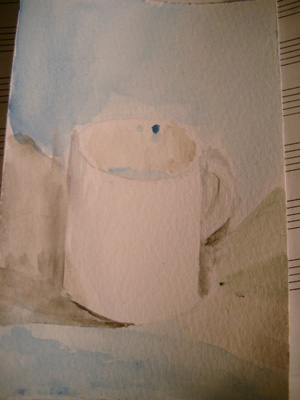 This was my first effort, from last week sometime. I just wanted to whack one out, to see if I could actually pay attention to what I was seeing.
This was my first effort, from last week sometime. I just wanted to whack one out, to see if I could actually pay attention to what I was seeing.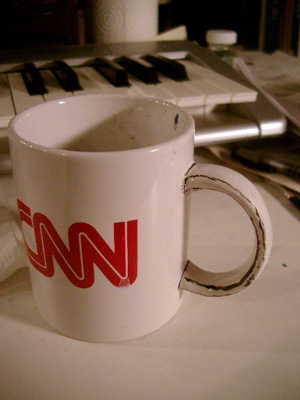 It also occurred to me this morning that if I had a mug whose handle was striped, it would help define those fuzzy edges. Then it occurred to me that I could do that myself, and so I did, striping the “edges” of the handle.
It also occurred to me this morning that if I had a mug whose handle was striped, it would help define those fuzzy edges. Then it occurred to me that I could do that myself, and so I did, striping the “edges” of the handle.
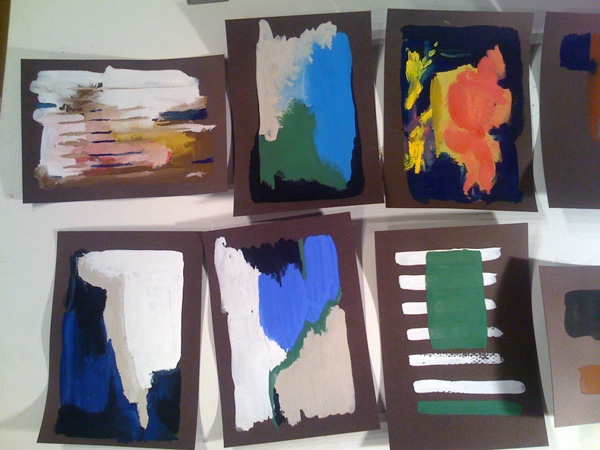
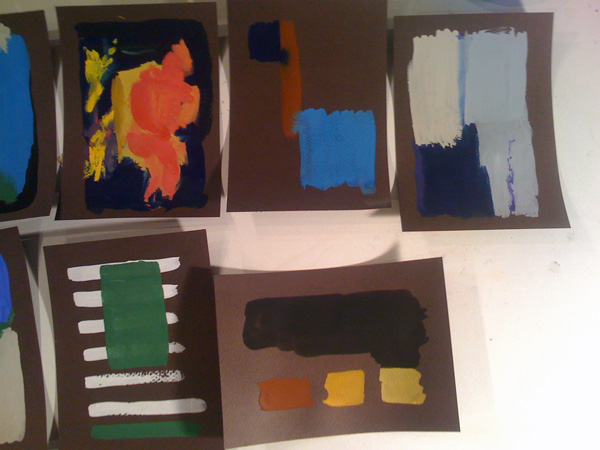
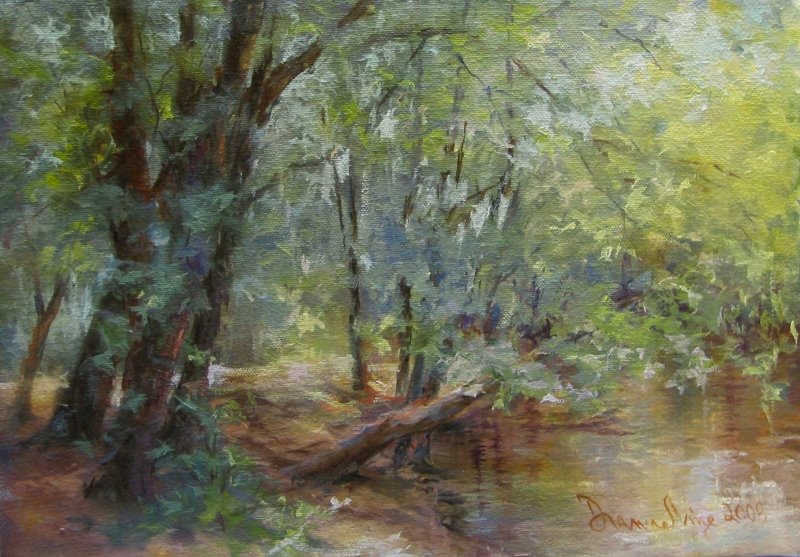
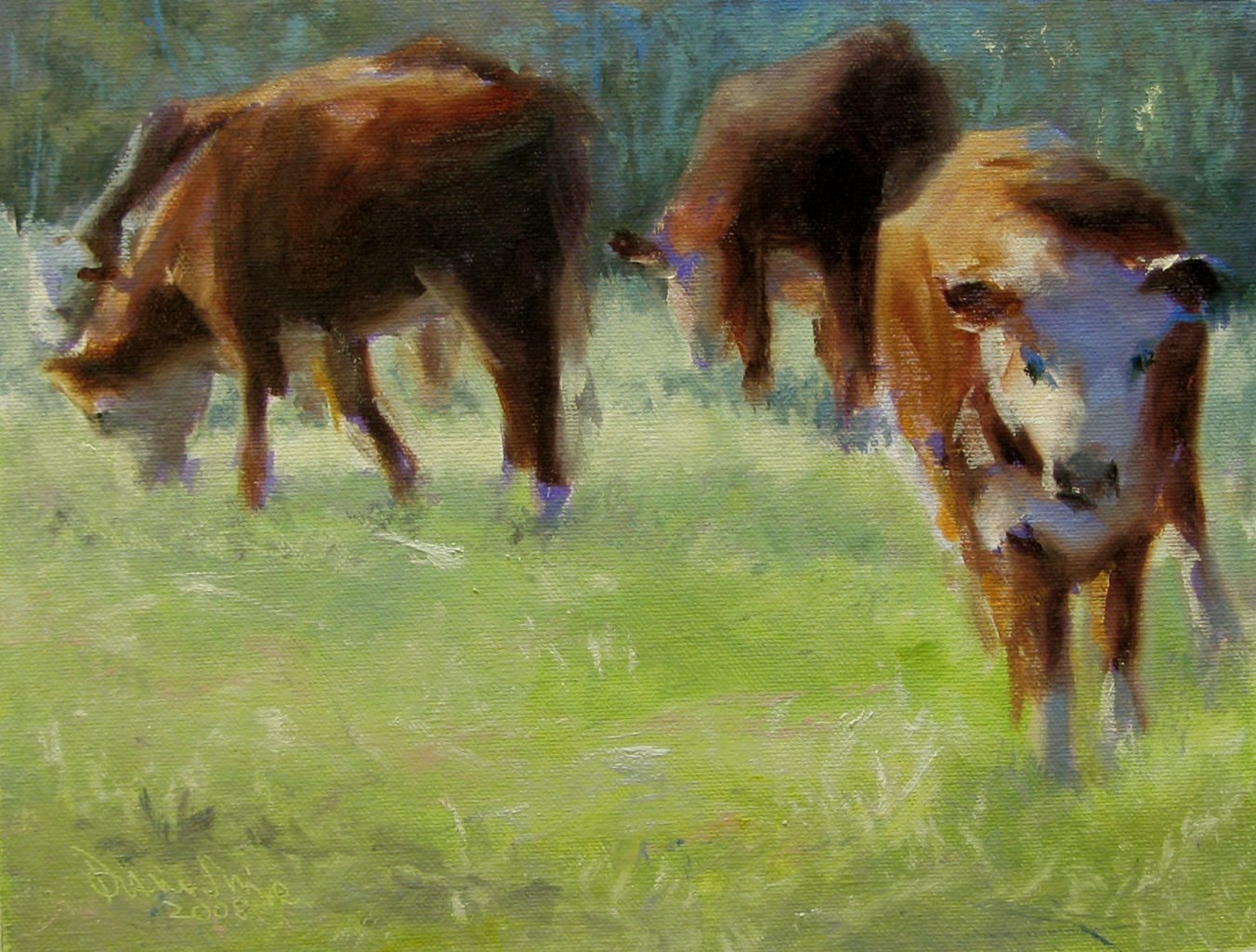


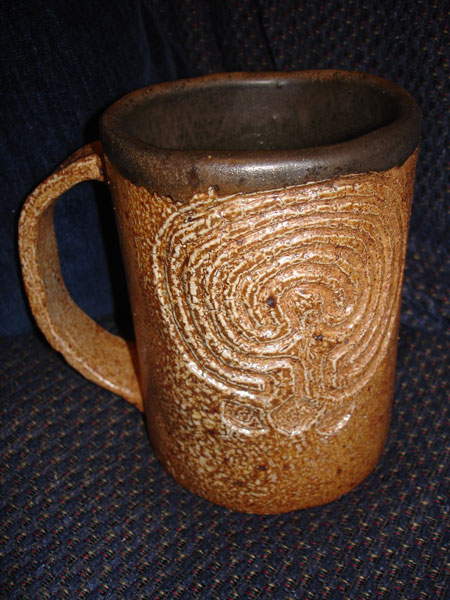 Not bad, although I think I should have used a green glaze for the interior. The size is just about right, so I was lucky there.
Not bad, although I think I should have used a green glaze for the interior. The size is just about right, so I was lucky there.